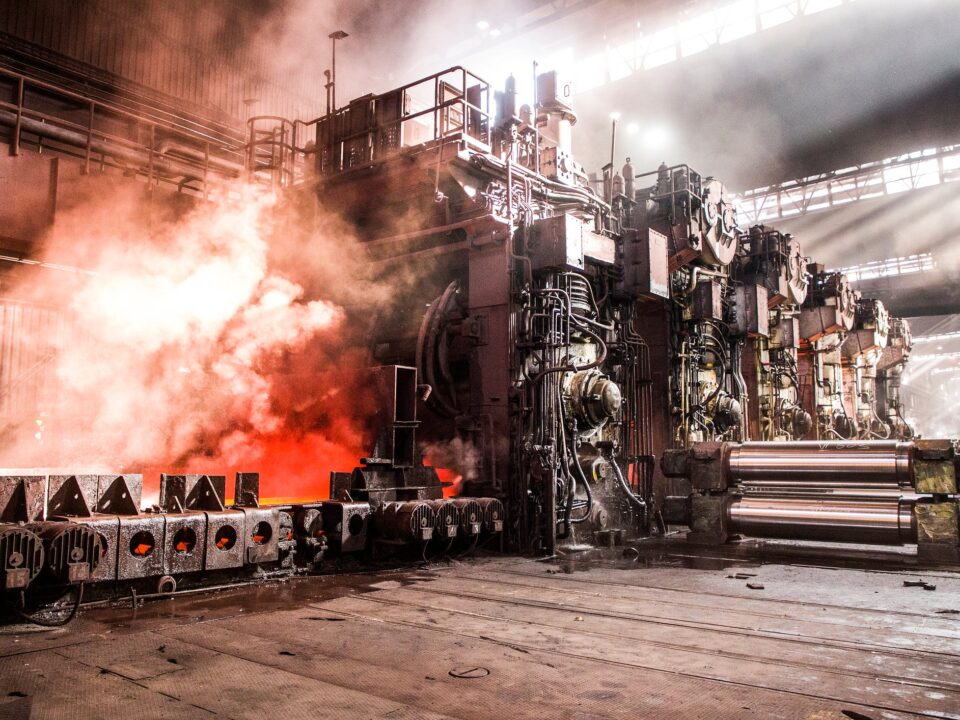How Process Hazard Analysis Plays a Crucial Role in the Indian Process Sector

Ensuring Workplace Safety: The Importance of an Industrial Hygiene Audit
October 18, 2023
Mastering the HIRA Method: A Comprehensive Study and Training Guide
October 19, 2023In this article, we delve into the paramount importance of Process Hazard Analysis (PHA) within the Indian process sector. As industries continue to grow in complexity and scale, the potential risks and hazards associated with these processes also intensify. Understanding how PHA plays a crucial role in identifying, assessing, and mitigating these risks is vital for ensuring the safety and well-being of employees, the environment, and the overall business productivity. Stay tuned as we explore the key components of PHA, its significance in complying with regulatory standards, and how it empowers organizations to proactively address safety concerns. Get ready to gain valuable insights that will equip you with the knowledge needed to enhance process safety and protect your operations. Start reading now and unlock the secret to a secure and successful process sector!
Introduction
Process Hazard Analysis (PHA) plays a crucial role in ensuring the safety and reliability of the Indian process sector. As industries in India continue to grow and evolve, it becomes imperative to identify and mitigate potential hazards that could pose risks to human life, environment, and assets.</p><p>In this article, we will delve into the significance of PHA in the Indian process sector and explore how it serves as a proactive approach to risk management. We will discuss the regulatory requirements and standards for PHA implementation in India, along with the key elements of the PHA process. Furthermore, we will analyze case studies showcasing the successful implementation of PHA programs
Understanding Process Hazard Analysis (PHA)
Understanding Process Hazard Analysis (PHA):Process Hazard Analysis (PHA) is a comprehensive and systematic approach used in the Indian process sector to identify and mitigate potential hazards associated with industrial processes. It involves a meticulous examination of the process, equipment, and operating procedures to identify risks that could lead to accidents, property damage, or harm to personnel.
This analytical technique involves evaluating various elements such as chemical reactions, equipment failures, human errors, external events like natural disasters, and their potential consequences. By understanding these risks and their underlying causes, organizations can develop effective control measures to prevent accidents and ensure the safety of both personnel and surrounding communities.
Comprehending PHA requires a holistic understanding of not only the technical aspects but also an appreciation for the intricacies of human factors that may contribute to process hazards. It emphasizes the need for interdisciplinary collaboration between engineers, operators, maintenance personnel, and safety professionals. Through this collective effort, organizations can proactively identify potential hazards before they escalate into catastrophic incidents.
By implementing PHA effectively in the Indian process sector, industries can foster a culture of safety consciousness that promotes continuous improvement in hazard identification and risk reduction. This not only ensures compliance with regulatory requirements but also enhances operational efficiency by minimizing downtime due to accidents or unplanned interruptions. Ultimately, understanding PHA empowers organizations to create safer working environments where employees feel confident in their wellbeing while contributing to India’s industrial growth.
Importance of Process Hazard Analysis in the Indian Process Sector
Process Hazard Analysis (PHA) plays a pivotal role in the Indian process sector by ensuring the safety, integrity, and reliability of operations. In this dynamic industry, where processes involve the handling of highly hazardous substances and complex machinery, the importance of PHA cannot be overstated. By systematically identifying, assessing, and mitigating potential hazards, PHA enables organizations to proactively manage risks and prevent catastrophic incidents.
One of the key reasons why PHA holds great significance in the Indian process sector is due to its compliance with regulatory requirements. The Ministry of Environment, Forest and Climate Change (MoEFCC) has mandated that industries carrying out hazardous activities must conduct a comprehensive PHA. This not only helps them meet legal obligations but also instills a culture of safety consciousness within their operations.
Moreover, PHA acts as an invaluable tool for enhancing operational efficiency and reducing downtime. By thoroughly analyzing processes and identifying potential hazards or bottlenecks beforehand, organizations can make informed decisions regarding design modifications or process improvements. This proactive approach ultimately leads to cost savings and increased productivity in the long run.Creative content: Just as a captain steers a ship through treacherous waters using charts and navigational aids to ensure smooth sailing towards their destination, so too does Process Hazard Analysis guide industries in navigating through complex operations while keeping them on course towards success.
Optimistic spin: Embracing Process Hazard Analysis empowers organizations in the Indian process sector to create an environment where safety is prioritized at every level. By investing time and resources into conducting thorough analyses, companies are taking proactive steps towards protecting their employees, assets, and reputation
Regulatory Requirements and Standards for PHA in India
Regulatory Requirements and Standards for PHA in India:In the Indian process sector, the importance of safety regulations cannot be overstated. The government has put in place stringent regulatory requirements and standards to ensure the implementation of effective Process Hazard Analysis (PHA) practices. The Bureau of Indian Standards (BIS) has formulated guidelines specifically for process safety management, which encompass PHA methodologies.
Under these regulations, it is mandatory for all process industries in India to conduct a systematic and comprehensive PHA study as part of their risk assessment procedures. This ensures that potential hazards are identified, analyzed, and mitigated to prevent accidents and protect workers’ lives. The government’s commitment to fostering a culture of safety within the process sector is commendable, providing businesses with a clear framework for ensuring their operations adhere to these standards.
By adhering to these regulatory requirements and standards, companies in the Indian process sector have an opportunity to not only enhance safety but also improve efficiency and productivity. A robust PHA program enables organizations to identify potential risks proactively, leading to targeted risk mitigation strategies. Moreover, by complying with these regulations, companies are able to build trust among stakeholders such as employees, customers, and investors who value a strong commitment towards safety.
Overall, the presence of regulatory requirements and standards for PHA in India signifies a progressive approach towards ensuring workplace safety in the process industry. By strictly adhering to these guidelines and continuously improving their PHA practices, companies can create an environment where employees can work with confidence while thriving under optimal conditions—ultimately contributing towards India’s vision of becoming a global leader in safe industrial operations.
Key Elements of the PHA Process
Understanding the inner workings of the PHA process is essential to harness its potential in mitigating process hazards. The key elements involved in PHA facilitate a comprehensive analysis of potential risks, enabling proactive measures to be taken. Firstly, hazard identification involves systematically identifying possible hazards associated with the process. This step encourages a thorough examination of all aspects, leaving no stone unturned.Once hazards are identified, consequence analysis comes into play. Assessing the severity and potential impact of each hazard allows for prioritization and resource allocation based on risk levels. By quantifying outcomes and evaluating worst-case scenarios, organizations can tailor their risk management strategies accordingly.
The third element is scenario analysis, where specific hazardous events are examined in detail. This step delves into various possibilities that may lead to accidents or incidents, allowing for an intricate understanding of causal factors. By analyzing these scenarios comprehensively, preventive measures can be developed to minimize the probability of such events occurring.
Incorporating these key elements within the PHA process provides organizations with a holistic view of potential hazards and actionable insights to protect their operations and personnel effectively. This meticulous approach fosters a culture of safety and resilience within the Indian process sector, promoting a brighter future where accidents become rare occurrences rather than commonplace risks.
Types of Process Hazards Addressed by PHA
Types of Process Hazards Addressed by PHA:Process Hazard Analysis (PHA) is a comprehensive approach that aims to identify and mitigate potential hazards in the Indian process sector. It encompasses various types of hazards that can arise during the lifecycle of a process facility. One prominent type of hazard addressed by PHA is fire and explosion hazards. These hazards are of significant concern due to their potential for catastrophic consequences, such as loss of life, property damage, and environmental pollution.
Another critical aspect that PHA considers is toxic release hazards. Processes involving hazardous substances can lead to accidental releases that pose risks to both workers and the surrounding community. By thoroughly analyzing chemical inventories, storage conditions, and potential release scenarios, PHA helps identify measures to prevent or mitigate such incidents.
Moreover, PHA also addresses physical hazards like mechanical failures, electrical malfunctions, and structural deficiencies that can compromise the integrity and safety of process equipment. By conducting systematic assessments focusing on these hazards, industries can implement appropriate maintenance strategies to minimize equipment failures and associated risks.
By effectively addressing these types of process hazards through PHA, industries can enhance operational safety while ensuring compliance with regulatory requirements. This proactive approach not only protects human lives but also fosters a positive working environment where employees feel secure in their roles within the Indian process sector
Benefits of Implementing Process Hazard Analysis
Implementing Process Hazard Analysis (PHA) in the Indian Process Sector offers a myriad of benefits that ensure the safety and well-being of both employees and the surrounding environment. Firstly, PHA helps identify potential hazards, allowing for proactive measures to be taken to prevent accidents and minimize risks. By systematically analyzing processes, equipment, and operational procedures, organizations can mitigate dangers before they escalate into catastrophes.Furthermore, PHA promotes a culture of safety within an organization. It fosters awareness among employees regarding potential hazards associated with their work environment and tasks. This creates a sense of responsibility and empowers individuals to actively participate in risk mitigation efforts. When everyone is involved in maintaining safety standards, not only do incidents decrease significantly but also productivity improves as employees feel valued and secure.
Lastly, implementing PHA demonstrates a commitment to regulatory compliance. By adhering to national and international standards for process safety management, organizations establish themselves as responsible industry players. This not only enhances their reputation but also instills confidence in stakeholders such as clients, investors, and regulatory authorities.
Ultimately, the comprehensive implementation of PHA reaps numerous benefits by ensuring a safe working environment for employees while simultaneously protecting communities from potential hazards associated with industrial processes. It is an investment that safeguards lives, fosters productivity, and contributes positively to the overall progress of the Indian process sector.
Case Studies: Successful Implementation of PHA in Indian Process Sector
In the Indian process sector, several noteworthy case studies exemplify the successful implementation of Process Hazard Analysis (PHA). One such case involves a major pharmaceutical company that conducted a comprehensive PHA for their chemical manufacturing facility. By identifying potential hazards and implementing effective control measures, they significantly reduced the risk of chemical accidents. This successful implementation not only safeguarded the workers but also boosted their productivity and overall confidence in performing their duties.Another inspiring case study comes from a leading petrochemical company that underwent an extensive PHA process for its refinery operations. By involving multidisciplinary teams and engaging with experts in the field, they successfully identified critical hazards and implemented appropriate safeguards. As a result, they experienced a significant reduction in incidents and near-misses, enhancing both worker safety and plant reliability. This commendable achievement demonstrates how PHA can serve as a catalyst for positive change within the Indian process industry.
In yet another remarkable instance, an Indian oil and gas company undertook a rigorous PHA exercise for their offshore drilling operations. Through meticulous analysis of potential hazards associated with drilling processes, they were able to implement effective risk mitigation strategies such as enhanced safety protocols and improved emergency response systems. The outcome was not only a safer working environment but also increased operational efficiency, contributing to their long-term success.
These real-life examples from the Indian process sector demonstrate how proactive implementation of Process Hazard Analysis can have a transformative impact on worker safety, operational excellence, and overall industry growth. By recognizing potential risks early on and adopting preventive measures proactively, companies are able to create an environment where employees thrive while maintaining high standards of productivity and profitability.
Challenges and Limitations of Process Hazard Analysis
Challenges and Limitations of Process Hazard AnalysisNavigating the intricate landscape of process hazard analysis is not without its challenges. One significant obstacle is the sheer complexity and diversity of processes in the Indian process sector. Each industry, be it chemical, oil and gas, pharmaceutical, or others, presents its own unique set of hazards that must be thoroughly analyzed. Balancing this diversity with a standardized approach poses a considerable challenge.
Furthermore, there can sometimes exist a lack of awareness regarding the importance of process hazard analysis among stakeholders. This can lead to resistance or reluctance in implementing comprehensive PHA programs. Overcoming this hurdle requires effective communication and education initiatives to emphasize the potential risks involved and highlight the long-term benefits associated with rigorous analysis.
Another limitation lies in keeping up with technological advancements within the process sector. As new processes are developed or existing ones are modified, traditional PHA methods may prove insufficient to address emerging hazards adequately. Adapting to these changes while ensuring compatibility with existing standards demands continuous research and development within the field.
However, despite these challenges and limitations, it is crucial to maintain an optimistic outlook on process hazard analysis in India’s process sector. By recognizing these obstacles as opportunities for growth and improvement, industries have an incentive to invest in dynamic PHA programs that evolve alongside their operations. With proper education and collaborative efforts between regulatory bodies and industry experts, these hurdles can be overcome to ensure a safer future for all stakeholders involved in India’s vibrant process sector.
Best Practices for Conducting Process Hazard Analysis in India
Best Practices for Conducting Process Hazard Analysis in India:One of the key aspects of conducting effective process hazard analysis (PHA) in the Indian process sector is ensuring a multidisciplinary team with diverse expertise. This includes professionals from engineering, operations, maintenance, and safety departments. By having a well-rounded team, different perspectives can be incorporated into the analysis, leading to comprehensive risk identification and mitigation strategies.
Additionally, it is crucial to follow a systematic approach when conducting PHA. This involves thorough documentation of the entire analysis process, including all findings, recommendations, and actions taken. By maintaining clear records, it becomes easier to track progress over time and ensure accountability within the organization.
Furthermore, regular reviews and updates of PHA procedures are imperative in order to keep up with evolving technologies and industry standards. By staying abreast of new developments and best practices, organizations can continuously improve their hazard analysis processes. This not only enhances safety but also boosts operational efficiency and fosters a culture of continuous learning within the organization.
In summary, for successful process hazard analysis in India’s process sector, establishing a multidisciplinary team, following a systematic approach with detailed documentation practices, as well as regularly reviewing and updating procedures are essential best practices that pave the way for enhanced safety and sustained success in operations.
Training and Competency Development for PHA
Training and Competency Development for PHA:Building a skilled workforce is essential for effective implementation of Process Hazard Analysis (PHA) in the Indian process sector. Training programs should encompass theoretical knowledge, practical experience, and critical thinking skills to ensure competency among professionals involved in conducting PHA studies.
Training modules can cover various topics such as understanding different PHA methodologies, risk assessment techniques, process safety standards and regulations, hazard identification and analysis tools, and incident investigation methods. These programs should also emphasize the importance of teamwork, communication skills, and decision-making abilities.
Furthermore, competency development can be enhanced through hands-on exercises simulating real-life scenarios. This allows participants to apply their knowledge practically and develop problem-solving skills while working collaboratively with multidisciplinary teams.
Investing in training and competency development not only equips professionals with the necessary tools to conduct comprehensive PHAs but also fosters a culture of continuous learning and improvement within organizations. By empowering individuals with the right knowledge and skills, companies can ensure safer processes that mitigate potential hazards effectively.
Remember: “Education is not preparation for life; education is life itself
Continuous Improvement and Monitoring of PHA Programs
Continuous Improvement and Monitoring of PHA Programs:Sustaining the effectiveness of Process Hazard Analysis (PHA) programs requires a proactive approach to continuous improvement and monitoring. This ensures that potential hazards are consistently identified, assessed, and mitigated throughout the lifecycle of a process. By regularly reviewing and updating PHA studies, organizations can adapt to changing conditions, technologies, and regulations in the Indian process sector.
One key aspect of continuous improvement is ongoing training for personnel involved in PHA activities. By providing regular training sessions tailored to their roles and responsibilities, organizations can enhance their understanding of hazard identification techniques, risk assessment methodologies, and best practices in process safety management. Knowledge transfer through training fosters a culture of awareness and vigilance among employees, leading to better decision-making during PHA studies.
Monitoring is another crucial element in maintaining an effective PHA program. Regular audits or assessments help identify any gaps or deficiencies in the implementation of hazard controls recommended by the PHA team. By monitoring these controls on an ongoing basis, organizations can verify their effectiveness in preventing accidents or incidents. This allows for timely adjustments or enhancements to ensure optimum safety levels are maintained within the Indian process sector.
In summary, continuous improvement and monitoring are fundamental to sustaining an effective PHA program within the Indian process sector. Through ongoing training initiatives and rigorous monitoring practices, organizations can enhance their safety performance by addressing evolving hazards proactively. This commitment to improvement not only safeguards human lives but also promotes sustainable growth while fostering a positive work environment where employees can thrive with confidence in their daily operations.
Conclusion
In conclusion, the implementation of Process Hazard Analysis (PHA) in the Indian process sector has proven to be a vital step towards ensuring safety and mitigating risks. By adhering to regulatory requirements and industry standards, organizations can identify potential hazards, evaluate their consequences, and develop effective control measures. Through case studies showcasing successful PHA implementations, it is evident that this systematic approach not only protects employees but also safeguards the environment and societal well-being. As challenges are addressed through best practices such as training, competency development, and continuous improvement, the future of PHA in India appears promising. With a commitment to safety at its core, the Indian process sector will continue to thrive while upholding its responsibility towards its workforce and stakeholders alike.




